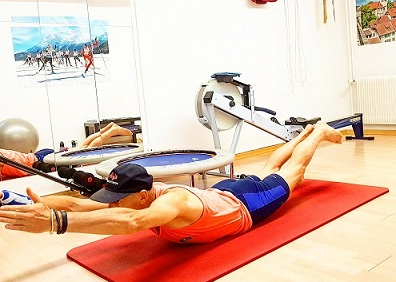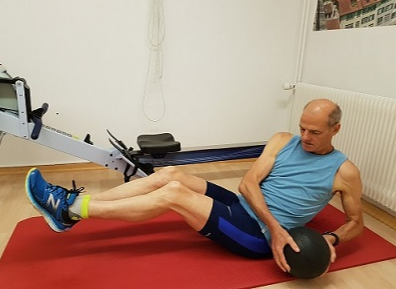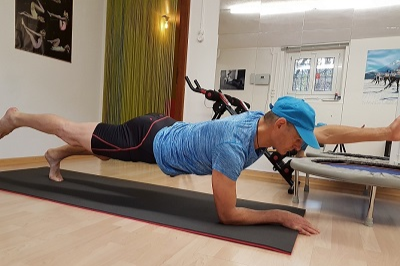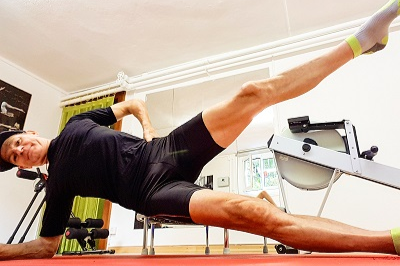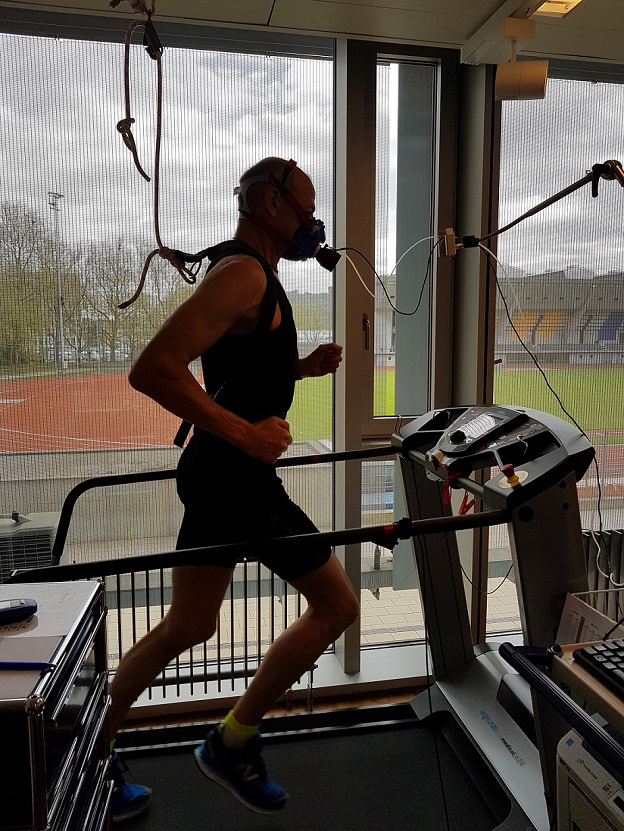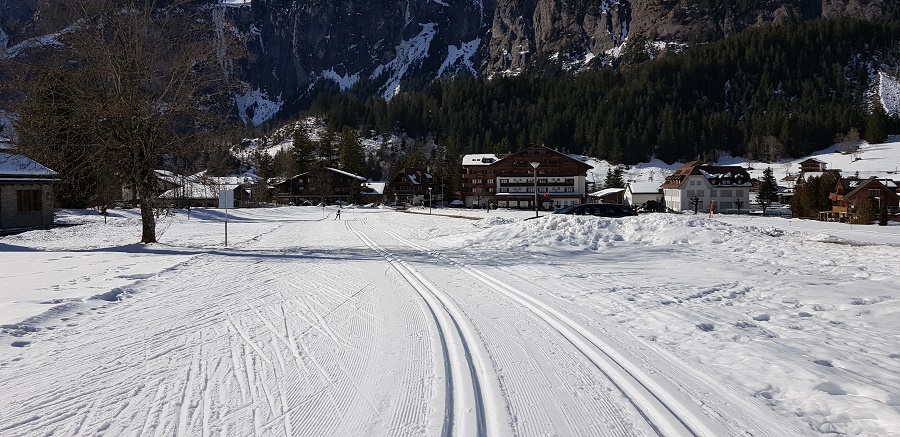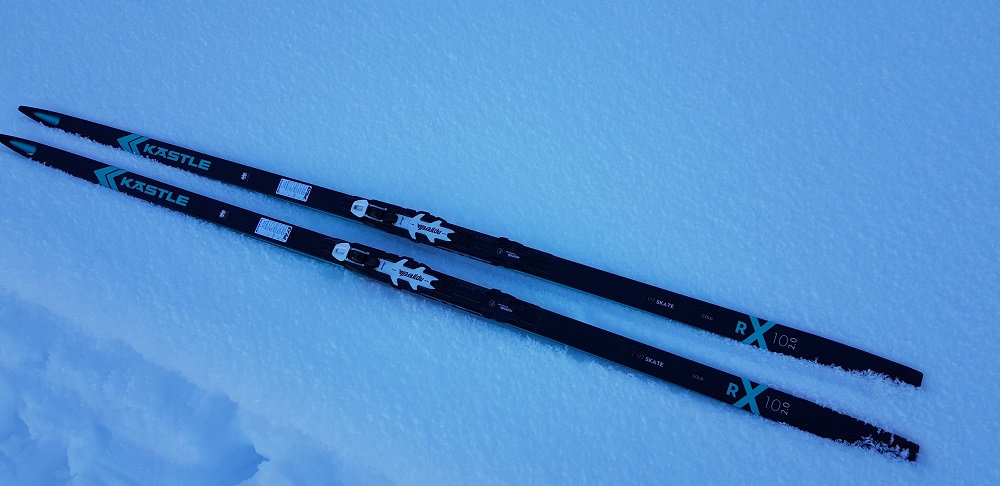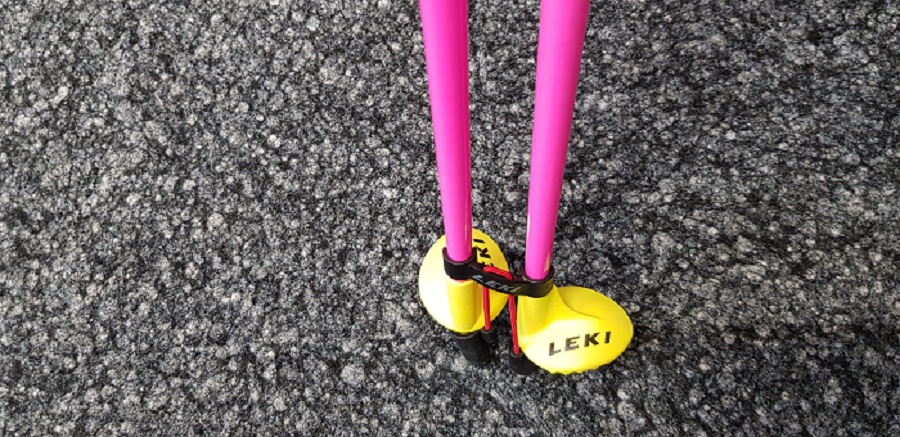Nordic ski strength training for competitive XC ski masters
Effective Nordic ski strength training sessions gets you ahead of the pack
Why has the strength training of Nordic skiing changed so much over the years?
Cross-country skiing has long ceased to be a pure endurance sport. For this reason, strength components are becoming more and more important.
This is thanks to better equipment and more challenging trails. That's why I'm going to introduce you to tailored Nordic ski strength training.
Doing regular Nordic ski strength training is an important part if you are a passionate cross-country skier. You not only need a well-developed endurance capacity, but also a high level of strength and power. This is necessary to produce and transfer forces efficient in the different skiing techniques.
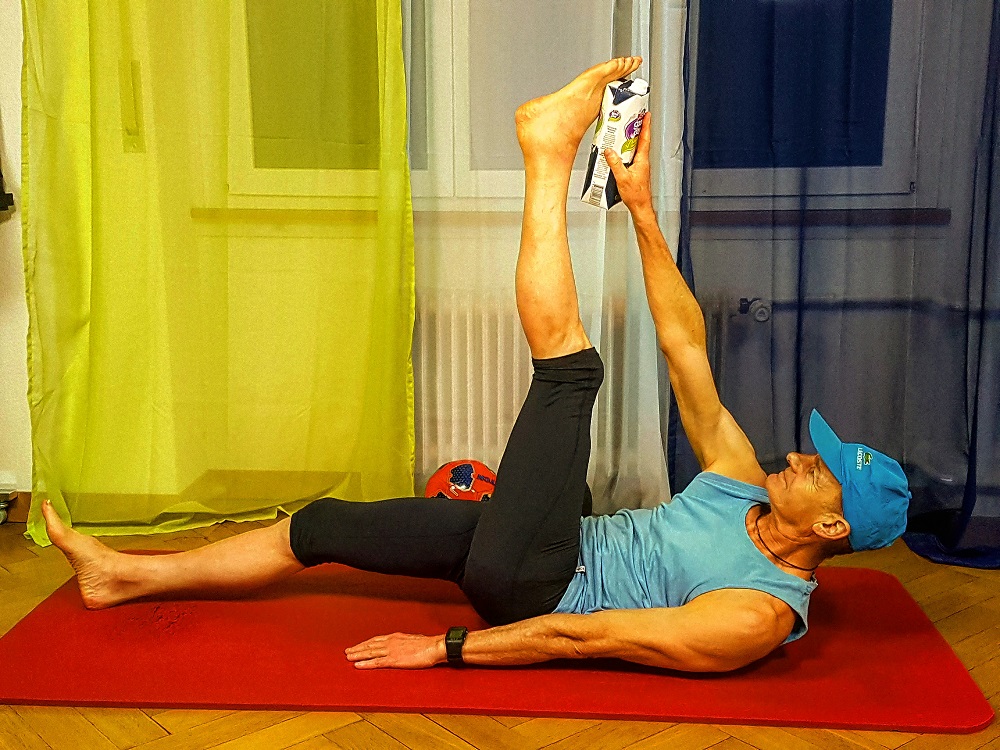 Lifting your left leg, right arm or reversed is a good coordination and core exercise. For best results, use a small weight in your hand.
Lifting your left leg, right arm or reversed is a good coordination and core exercise. For best results, use a small weight in your hand.Because if you work on your muscular endurance during the summer, you will improve your performance by the time the winter arrives.
Over the decades, xc skiing has developed from a pure endurance sport into a strength endurance sport. Before the early 90’s, elite XC skiers didn’t do as much specific strength training. But today, the strength training for Nordic skiing is integrated into every training plan.
We don’t use the diagonal stride in the classic technique so much anymore than let’s say 15 or 20 years ago. For this reason, when you do classic skiing, use the double pole and double pole kick techniques in flat terrain.
When you have become strong enough, you can also apply those techniques in easy to moderate ascents. And yes, the strongest cross-country skiers can even double pole very steep hills. Of course, this is achieved only with very specific Nordic ski strength training.
In skating, the upper body technique for the V1 and V2 is identical to double pulling. So specific strength training for the pulling action has become even more important.
If we go back in history to the 50’s, 60’s and even 70’s, most men champion XC skiers were farmers and lumberjacks. At that time, they ran or skied long distances to and from felling areas while working long days in the woods.
In addition, they trained as much as possible during the summer. With increased intensity during the autumn, they worked less but with more ski-specific training and competitions during the winter.
Until the 1970’s, few XC skiers were females, because coaches believed that they couldn’t tolerate such high training volumes. But when it comes to the endurance, the women are as tuff as men. Of course, they are not as strong, especially in their upper body compared to their strength in the legs.
Successful elite XC skiers from earlier decades achieved VO2max values as high as today’s best skiers (i.e., for men, >80 mL/kg/min). And from working in the woods all day, they became naturally very strong. Also elite women skiers achieve VO2max over >65 mL/kg/min.
Nordic ski strength training in the preparation period
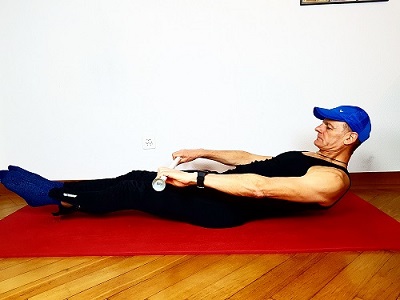 To do this core exercise, use a stick or an iron bar and lie on you back with your legs slightly off the mat. Now pull your legs towards your chest. To do this core exercise, use a stick or an iron bar and lie on you back with your legs slightly off the mat. Now pull your legs towards your chest. |
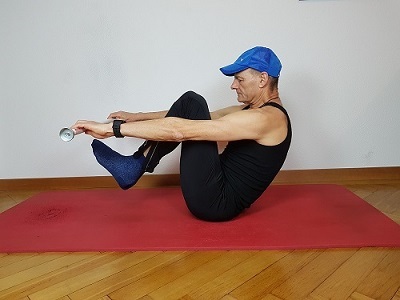 At the same time extend your arms and bring the stick over your feet and back until it touches your butt. Now return to your starting position. At the same time extend your arms and bring the stick over your feet and back until it touches your butt. Now return to your starting position. |
Cross country skiers start regular training again in early May. April is sort of a transition month where you do mostly non-specific training. However, in April it’s necessary to do still some strength exercises, but not specific Nordic ski strength training. You lose your strength fast when you stop for too long.
The first preparation period is 4 months for age group Nordic ski Masters athletes is from May to August. During that time, strength is progressively built up.
In the first 2 weeks, you familiarize yourself and learn the proper technique. Then the load of the weights is gradually added until to the point where you struggle to maintain a good technique for the planned number of repetitions.
You should do 2 specific Nordic ski strength training workouts a week, but if those sessions are short, you can do 3.
I normally do the first strength workout at the beginning of the week on Tuesday and the second on Friday. That of course depends on my time schedule. There are certain guidelines to when you should integrate your weekly strength sessions.
The second periodization period is from August
to November. The goal of any Nordic ski strength training
session is to develop your strength and endurance.
Your strength training session on Tuesday should be done with heavy weights. Keep the number of repetitions quite low – between 4 - 6 reps.
There are 2 parts of strength training to look out for.
Part 1: Core/stabilization exercises
Part 2: Maximum strength training
How to improve your endurance strength?
General warm-up: easy running for 20-30 min. Low intensity
for the first 15 min at 70% HR. Thereafter increase the intensity a little up
to 80% of max HR. Include sprints like 5 x 8 seconds and jumps 5 x 15 at the
end of your warm-up.
Part 1: Core/stabilization exercises
These exercises can be done on a mat. Do 3 sets of each exercise for 30/15 sec work/rest ratio. Exception: Superman 3 sets of 30/30 sec with 3 sec holds. Slow and controlled movement.
- 2-point plank
- Ab roller
- Hollow sit
- Superman
Do 3 sets of 20/ 40 sec work/rest ratio. Controlled, accelerated movement
-
Skating simulation with a light weight in your
hands for better balance
- Medicine ball: down throw, front throw, side
throw
- Russian twists with or without medicine ball
- Tricep dips with or without weight
Part 2: Maximal strength exercises
Do 3 sets of each exercise and 5 reps at 60-80% of 1RM. The movement should be controlled but at high intended velocity.
- Dumbbell pullover
- Seated pull-downs
- Lying bench pulls (lying on your stomach)
- Hang power cleans
- Standing double poling
- Step-up with weights
- Calf raises with weights
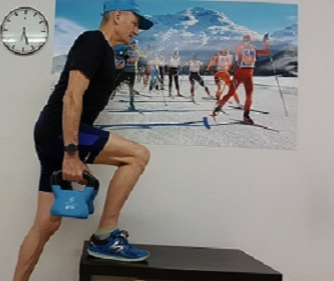 You need strong quadriceps to ski up those hills easier. Use the step-up exercise with a weight in your hands does the job You need strong quadriceps to ski up those hills easier. Use the step-up exercise with a weight in your hands does the job |
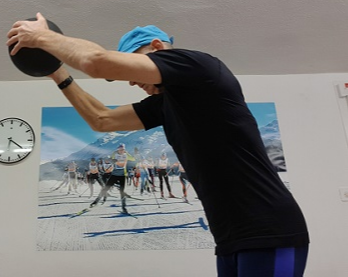 The medicine ball throw down improves your coordination and builds core strength. Do a 3 - 4 sets of 30 seconds and rest for 45 seconds The medicine ball throw down improves your coordination and builds core strength. Do a 3 - 4 sets of 30 seconds and rest for 45 seconds |
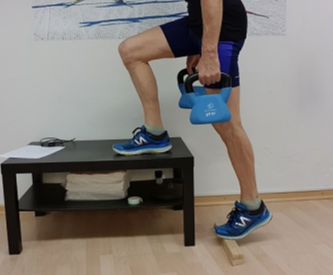 Calf raises with a weight in each hand helps you develop an explosive kick for the diagonal stride and double pole technique Calf raises with a weight in each hand helps you develop an explosive kick for the diagonal stride and double pole technique |
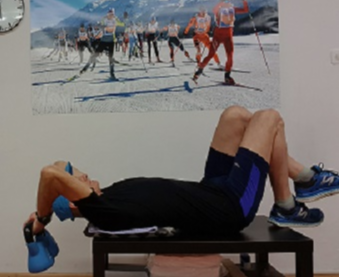 Kettle-bell or dumbbell pullovers works your upper body muscles. They include the latissimus dorsi, the pectoralis major and pectoralis minor Kettle-bell or dumbbell pullovers works your upper body muscles. They include the latissimus dorsi, the pectoralis major and pectoralis minor |
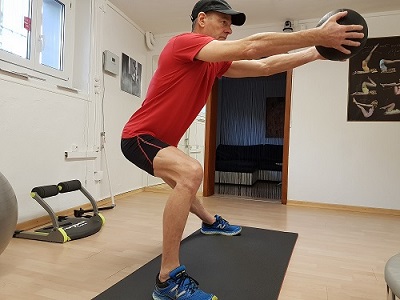 For the side leg lunge, use a light dumbbell to build stability in your upper body. Put your butt behind your heals so your knees don't reach over your toes For the side leg lunge, use a light dumbbell to build stability in your upper body. Put your butt behind your heals so your knees don't reach over your toes |
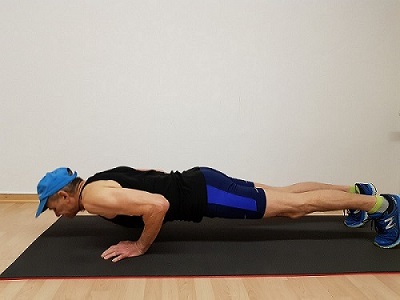 Narrow push-ups are great to increase strength in your triceps. It helps for more efficiency in your double pole and V2 skate techniques Narrow push-ups are great to increase strength in your triceps. It helps for more efficiency in your double pole and V2 skate techniques |
At the end of your strength training session, do an easy recovery run or cycling at 60-70% of max HR for 10 minutes.
You achieve the best results with Nordic ski strength training through a mix.
Use heavy loads on the first strength session on let's say Tuesday. And lower loads but higher velocities of movement completion on let's say Friday.
Want more helpful tips on how to prepare yourself for next ski season to compete in Masters XC ski races or just to get fit, then please sign up.
